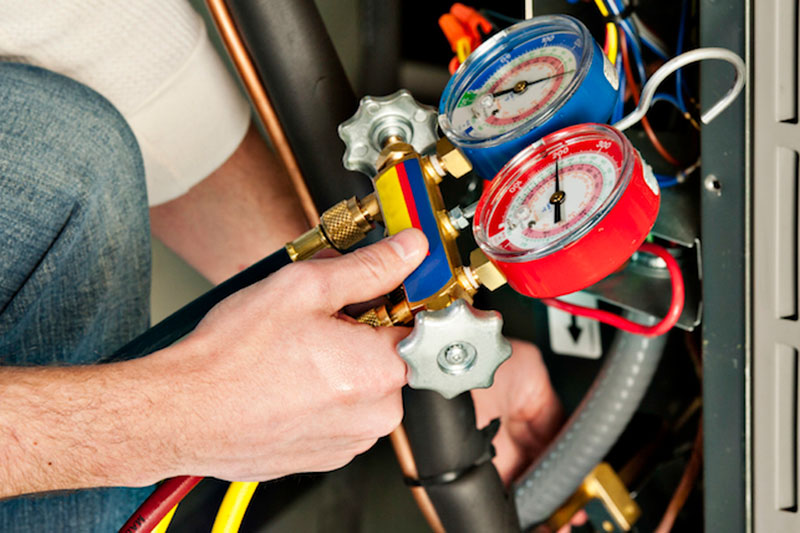
You might not think often about how your air conditioner works, but it needs refrigerant to keep your house cold. This refrigerant is controlled by environmental rules, as it contains chemicals.
Based on when your air conditioner was installed, it may need R-22, R-410A or R-32 refrigerant. We’ll go over the differences and which air conditioner refrigerants are being phased out in Justin, in addition to how these phaseouts impact you.
What’s R-22 and Why Is It No Longer Being Made?
If your air conditioner was installed before 2010, it probably has Freon®. You can find out if your air conditioner has it by calling us at 940-202-1184. You can also look at the name plate on your air conditioner condenser, which is located outside your home. This sticker will include details on what model of refrigerant your AC uses.
Freon, which is also called R-22, has chlorine. Scientists consider Freon to be damaging to the earth’s ozone layer and one that results in global warming. The Environmental Protection Agency, which governs refrigerants in the United States, banned its creation and import in January 2020.
Should I Replace My R-22 Air Conditioner?
It depends. If your air conditioning is operating properly, you can continue to use it. With yearly air conditioner maintenance, you can expect your AC to operate around 15–20 years. However, the Department of Energy notes that removing a 10-year-old air conditioner could save you 20–40% on summertime cooling bills!
If you don’t replace your air conditioner, it may lead to a problem if you need air conditioning repair down the road, specifically for refrigerant. Repairs could be pricier, since only small levels of recycled and reclaimed R-22 is available.
With the end of R-22, many new air conditioners now use Puron®. Also called R-410A, this refrigerant was created to keep the ozone layer healthy. As it calls for a different pressure level, it isn’t compatible with air conditioners that use R-22 for cooling.
However, Puron still has the possibility to lead to global warming. As a consequence, it may also ultimately be ended. Although it hasn’t been mandated yet for residential air conditioners, it’s likely sometime this decade.
What Refrigerant Will Take Over R-410A?
In preparation of the discontinuation, some brands have begun using R-32 in new air conditioners. This refrigerant is classified low for global warming likelihood—about one-third less than R-410A. And it also lowers energy expenditure by around 10%, according to the Intergovernmental Panel on Climate Change’s Fourth Assessment Report. That’s savings that could be forwarded on to you through your cooling costs.
Pepper AC & Heat Can Help with All Your Air Conditioning Needs
In brief, the modifications to air conditioner refrigerant probably won’t concern you greatly until you need repairs. But as we talked about earlier, refrigerant-related repairs may be more costly because of the reduced amounts available.
Aside from that, your air conditioner frequently stops working at the worst time, often on the muggiest day when we’re experiencing a lot of other appointments for AC repair.
If your air conditioner requires a discontinued refrigerant or is more than 15 years old, we suggest installing a new, energy-efficient air conditioner. This ensures a stress-free summer and may even reduce your electrical costs, especially if you get an ENERGY STAR®-rated system. Plus, Pepper AC & Heat has many financing options to make your new air conditioner even more affordable. Contact us at 940-202-1184 to begin today with a free estimate.


